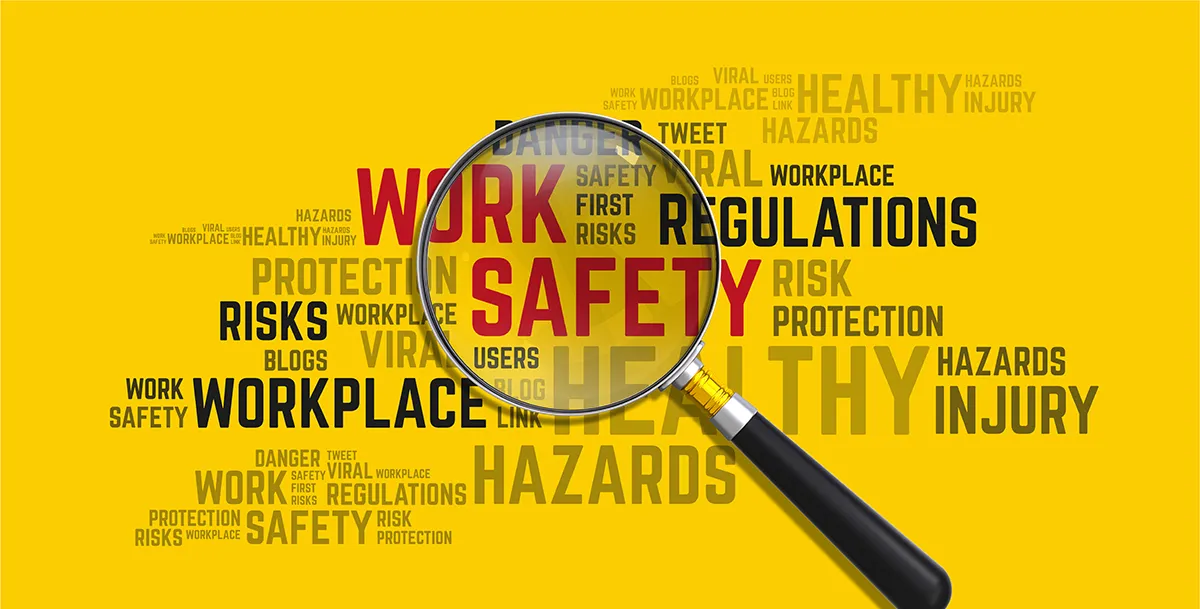Safety Integrity Levels Guide: Process – Risk Assessment

Ensuring effective safety in industrial settings shouldn’t be left to chance: it’s achievable with the help of Safety Integrity Levels (SILs). Workplace incidents are a sobering reality – according to the Occupational Safety and Health Administration (OSHA) in 2022 there were 5,436 fatal work injuries. The cost of these accidents can be significant, impacting not only human lives and safety but also causing financial losses due to damage, downtime and potential legal ramifications. Implementing effective risk assessment and incorporating the appropriate SILs can significantly reduce the likelihood and severity of accidents, leading to cost savings in the long run. While SILs can be complex, once organizations and health and safety practitioners gain a better understanding, they can provide a robust framework to enhance safety practices. The following guide has been created to empower organizations to grasp SILs, the impact they have on risk assessment and how to apply the knowledge across practical applications in a wide range of sectors.
What are Safety Integrity Levels (SILs)?
Why are SILs important for ensuring safety across industries?
How do you calculate the SILs?
What is the role of SILs in risk assessment?
Testing and verification of SILs
What are Safety Integrity Levels (SILs)?
SILs represent an important aspect of industrial safety by providing a systematic framework to assess and manage the risks associated with process industries. However, to correctly understand SILs, it’s also important to understand safety instrumented functions (SIFs) and safety instrumented systems (SIS). SIFs represent a single, specific function designed to achieve a particular safety objective in an industrial process, such as shutting down equipment on reaching a critical temperature or activating an emergency shutdown system. Conversely, a SIS is a complete system composed of various components such as sensors, logic solvers and final control elements. This system houses and executes one or more SIFs to maintain a safe operational environment. Defining SIF and SIS helps us understand SILs in greater detail.
SILs are defined levels of performance for SIS, established to achieve a tolerable level of risk. Employed primarily in sectors such as oil and gas, chemical and manufacturing, SILs are determined through a rigorous process of risk assessment, considering factors such as potential hazards, consequences of failures and the effectiveness of safety measures. These levels, ranging from SIL 1 to SIL 4, guide the design and implementation of safety systems, ensuring they meet specific reliability and performance criteria. Adhering to SIL standards not only enhances the overall safety of industrial processes but also fosters a proactive approach to risk management, aligning with global standards and regulations.
Why are SILs important for ensuring safety across industries?
By providing a standardized framework for evaluating and mitigating potential risks, SILs play a pivotal role in ensuring safety across sectors. Determined through a meticulous process of risk assessment, these levels enable organizations to proactively identify and address operational hazards. By assigning SILs to specific safety functions, sectors can implement appropriate measures to reduce the likelihood of failures that could lead to catastrophic incidents. This systematic approach enhances the reliability of safety-critical systems while facilitating clear communication of safety requirements throughout the organization. As a result, SILs serve as an essential tool to foster a positive culture around safety, minimizing the likelihood of incidents and safeguarding workers.
What are the different SILs?
To determine the reliability and effectiveness of SIS in mitigating risks within the industrial processes, SILs are categorized into four levels. Ranging from SIL 1 to SIL 4, these levels represent increasing levels of risk reduction, with SIL 4 providing the highest degree of reliability. Each level corresponds to a specific target for risk reduction, ensuring that the safety systems in place adequately address the identified risks. The higher the SIL, the higher the level of safety and the lower the probability of the system failing to perform properly. As industries strive for safer operations, understanding and implementing the appropriate SIL is crucial for preventing potential dangers and ensuring the integrity of safety-critical systems.
How do you calculate the SILs?
Calculating the SIL involves a meticulous process-driven approach, focused on risk assessment to ensure the reliability and safety of systems. This comprehensive process considers factors such as potential hazards, the likelihood of occurrence and the severity of consequences. Generally, the formula implemented combines the Probability of Failure on Demand (PFD) and the Risk Reduction Factor (RRF) to ascertain the SIL. According to the Center for Chemical Process Safety, PFD reflects the likelihood of a system failing when challenged to perform a safety function. RRF, however, quantifies the effectiveness of risk reduction measures by considering the number of times the risk decreases when comparing one scenario against another. The combination of these factors allows organizations to determine the appropriate SIL for their systems, guiding the implementation of safety measures and ensuring a robust framework that aligns with industry standards and regulations.
What is the role of SILs in risk assessment?
In the realm of risk assessment, SILs play a crucial role by quantifying the required risk reduction for a SIF within a system. By establishing the links between risk and SIF performance, we can develop a better understanding of SILs. Risk assessments identify the hazards and analyze the severity and likelihood of occurrence – ultimately determining the unmitigated risk. SILs come into play by ascertaining the target risk reduction level required from the SIF to bring the risk down to an acceptable level or ‘tolerable risk’.
By comparing the unmitigated risk with the tolerable risk, the gap in risk reduction becomes more evident. This gap is then mapped to a specific SIL, where higher SILs represent a greater reduction in risk from the SIF. The assigned SIL becomes an important piece of information for designing, implementing and maintaining the SIF. Different SILs provide guidance in design, hardware selection, software development and testing to ensure the SIF meets the required performance level.
In essence, SILs bridge the gap between risk assessment and SIF design by translating the desired risk reduction into a specific performance requirement for the safety system.
How to determine the appropriate SILs
Determining the appropriate SIL (safety integrity levels) for a SIF (safety instrumented function) involves a structured and documented process as outlined in various standards such as IEC 61508. Here’s a simplified breakdown of the key steps:
1. Conduct a risk assessment:
- Identify all potential hazards within your system or process.
- Analyze each hazard’s severity (consequences of failure) and likelihood (frequency of occurrence).
- Calculate the unmitigated risk, which is the risk without any safety measures in place.
2. Determine tolerable risk:
- Establish the acceptable level of risk (tolerable risk) for your application, considering factors such as regulations, industry standards and societal expectations.
3. Calculate required risk reduction:
- Compare the unmitigated risk with the tolerable risk.
- The gap between these two values represents the required risk reduction needed from the SIF.
4. Map risk reduction to SIL:
- Refer to SIL tables or risk matrices provided in standards like IEC 61508.
- These tables link the required risk reduction level (typically expressed in terms of probability of failure on demand – PFD) to a specific SIL level (ranging from SIL 1 to SIL 4). Each SIL corresponds to a specific target PFD for the SIF.
5. Consider additional factors:
- While the risk reduction calculation provides a starting point, additional factors may influence the final SIL selection. These include:
- Legal and regulatory requirements might mandate a specific SIL for certain applications.
- Economic factors can influence the cost-effectiveness of implementing a higher SIL.
- Technology available can impact the technical capabilities of achieving the target PFD for a SIL.
This is a simplified overview. It’s crucial to consult relevant standards and seek guidance from qualified professionals when determining SILs for safety-critical applications.
Testing and verification of SILs
As with any system implementation, testing and verification are important aspects for ensuring SILs are effective within the risk assessment framework. Testing helps identify and address any design flaws or weaknesses that could prevent the SIF from performing as intended under hazardous conditions. By verifying the design against the SIL-specific requirements outlined in standards like IEC 61508, confidence is gained that the SIF has the capability of achieving the target PFD.
Verification focuses on the design aspect while validation centers on the actual performance of the implemented SIF. Testing and monitoring the system under simulated and real-world scenarios ensures it functions reliably and delivers the required level of risk reduction in the case of a real hazard.
By conducting thorough testing and verification, evidence is obtained to demonstrate that the SIF meets the predetermined safety requirements associated with its designated SIL. This helps build confidence in the system’s safety and minimizes the overall risk associated with the operations while meeting any regulatory compliance that mandates testing and verification processes. In addition to this, testing and verification provides valuable insights into performance and reliability. The data can be used to identify areas of improvement in the design, maintenance or operation, leading to enhanced safety and risk reduction over time.
Maintaining SILs
When SILs have been established, it’s crucial to maintain the levels in order to ensure the ongoing safety of workers, equipment and the environment. Organizations must employ robust procedures for periodic evaluations, including a thorough analysis of potential hazards and their corresponding risk levels. Over time, components within a SIF can degrade due to wear and tear, aging or environmental factors. Regular maintenance and testing, aligned with the specific SIL, help identify and address these issues before they lead to performance failures. This ensures the SIF continues to meet the required PFD and effectively mitigate risks when needed.
Maintaining SILs also ensures organizations are adapting to change. Processes and operating conditions can evolve over time, potentially introducing new or altered hazards. Maintaining SILs involves revisiting the risk assessment and, if necessary, adjusting the SIL or implementing additional safeguards. This ensures the SIF remains effective in mitigating risks even as the context around it changes. A proactive approach to maintenance, coupled with technological advancements, aids in optimizing the performance of safety instruments and maintaining SIL requirements. Adherence to industry standards, such as IEC 61511, is crucial to guarantee the effectiveness of safety measures over time. By continuously verifying and adapting the safety measures, the overall integrity of the system is maintained, preventing accidents and ensuring long-term safety.
Conclusion
It is evident that SILs can be a cornerstone of ensuring workplace safety. They provide a systematic framework for assessing and managing risks associated with various processes. Implementing SILs, alongside thorough risk assessments, significantly reduces the likelihood and severity of accidents, leading to long-term cost savings and improved safety. While understanding SILs can initially appear complex, the knowledge empowers organizations and safety professionals to establish a robust framework for enhanced safety practices.




